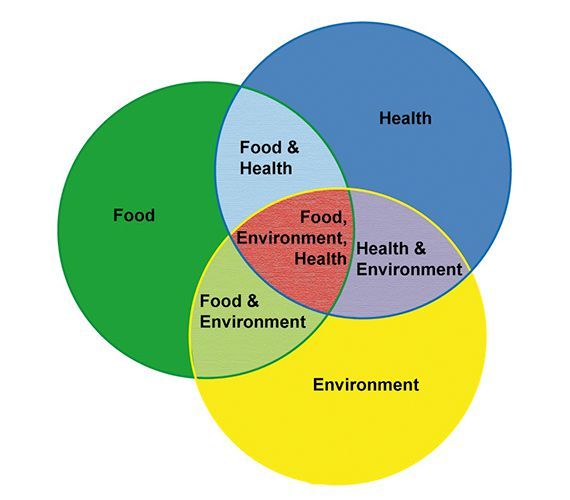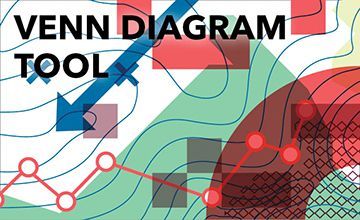Venn diagram tool
A diagram for forming groups around joint topics based on participants’ background, expertise, and interest.
Pearce B 2020. Venn diagram tool. td-net toolbox profile (6). Swiss Academies of Arts and Sciences: td-net toolbox for co-producing knowledge. www.transdisciplinarity.ch/toolbox. doi.org/10.5281/zenodo.3717541
| What is the Venn diagram tool? | The Venn diagram tool provides a structure to clarify each participant’s expertise (e.g. background, interest, discipline) in relation to joint topics of interest. The tool consists of three or more circles indicating topics that overlap. Based on their expertise and interests, participants are allocated to a circle or to an overlap area. Applied to a heterogeneous group of people, this tool serves to:
|
| Why should it be applied? | Co-production of knowledge brings together a variety of participants with individual backgrounds, interests and expertise. The Venn diagram tool makes participants aware of each other’s expertise for and interest in joint topics. It allows participants to either self-organise into smaller groups, or moderators to form groups in a transparent process. |

| When should it be applied? | The Venn diagram tool is suited for a first workshop of a joint project in order to get to know each other and to identify topics for knowledge co-production. |
| How does it work? | 1) The facilitator clarifies with the participants or the leaders of the project what topics should be integrated (e.g. food, health and the environment). |
| How are thought-styles bridged? | The Venn diagram tool requires the facilitator and the participants to explicitly acknowledge the different thought-styles that are present as they place themselves within a “landscape” of topics and explain what expertise they can contribute. The Venn diagram further explicitly tries to find shared interest between participants by providing a physical space where overlap and commonalities become visible. |
| What’s the output/outcome? | A main outcome is a set of joint topics and groups of participants that are interested to further frame the topics for co-production of knowledge. A secondary outcome is that people are more aware of the different backgrounds, interest and expertise in the room, where they are relative to them and where overlaps are possible. |
| Who participates in what role? | It is helpful to appoint a facilitator to support the process. The participants are, however, key in representing themselves on the Venn diagram. |
| What do I need to prepare? | Post-its, large printout of Venn diagram, markers; Or laptop and projector. |
| When not to use the method? | The Venn diagram tool is suitable for medium sized groups (10-30 participants) and not for smaller or larger ones. |


